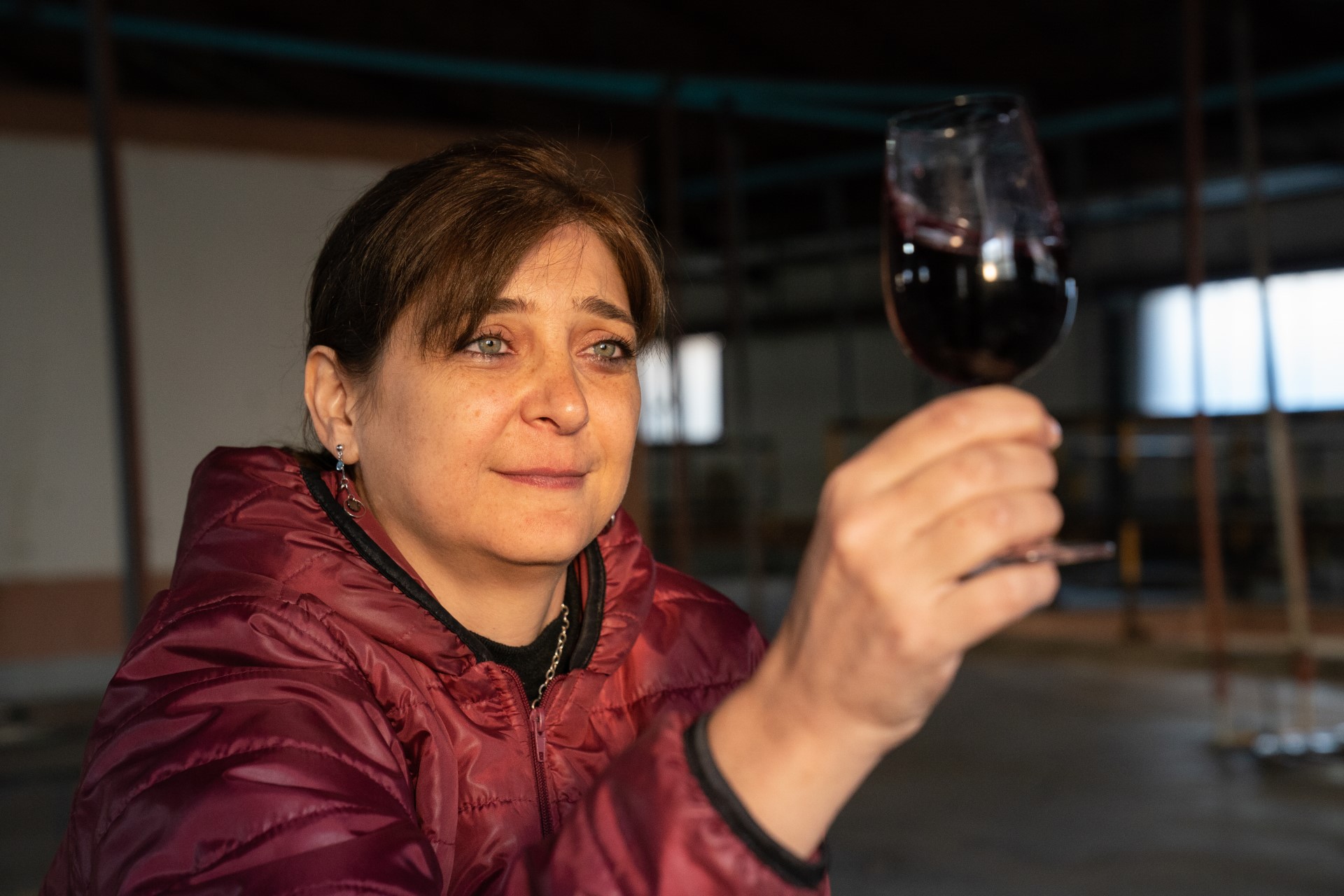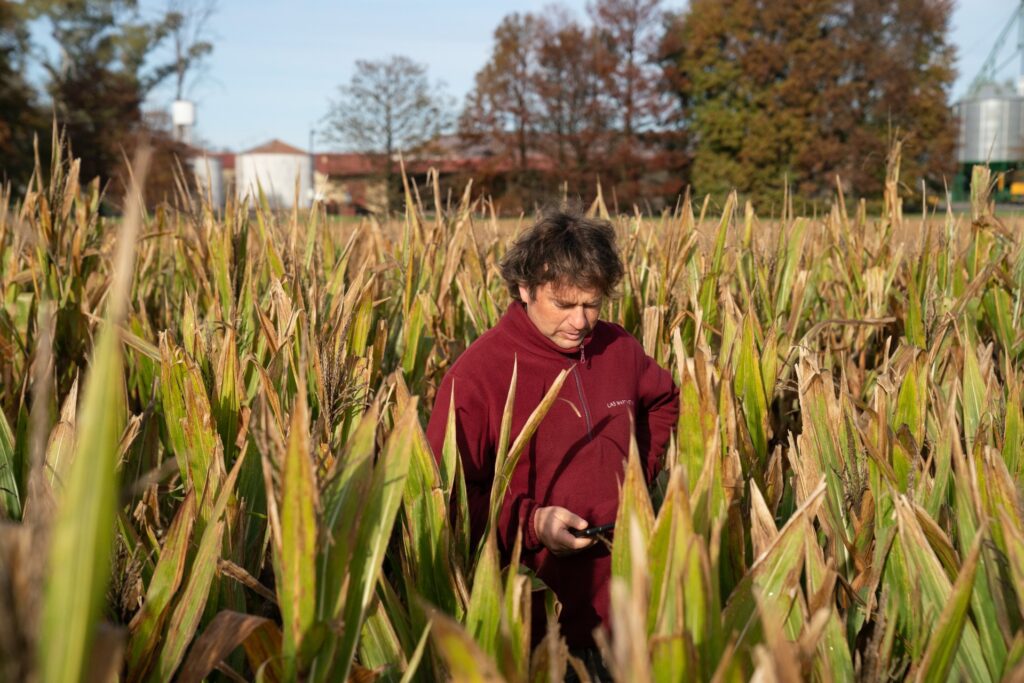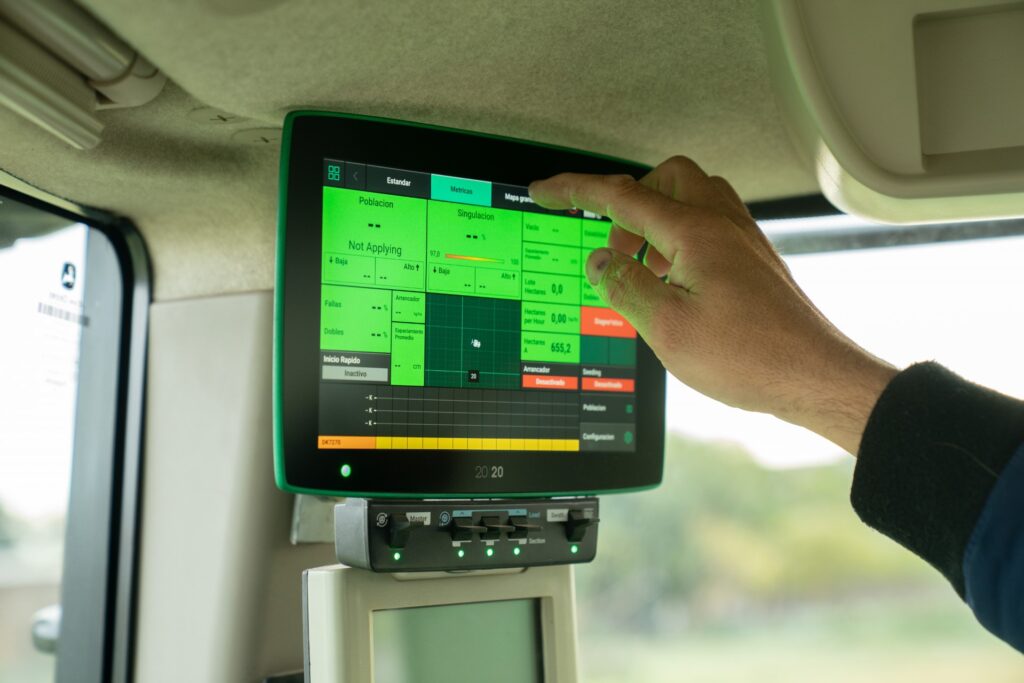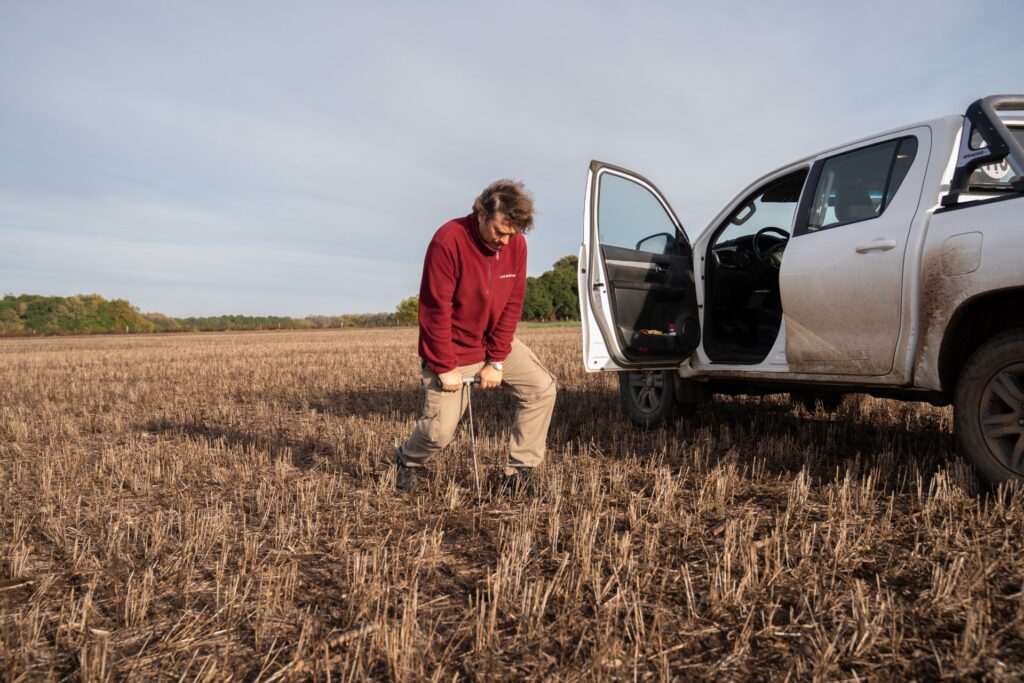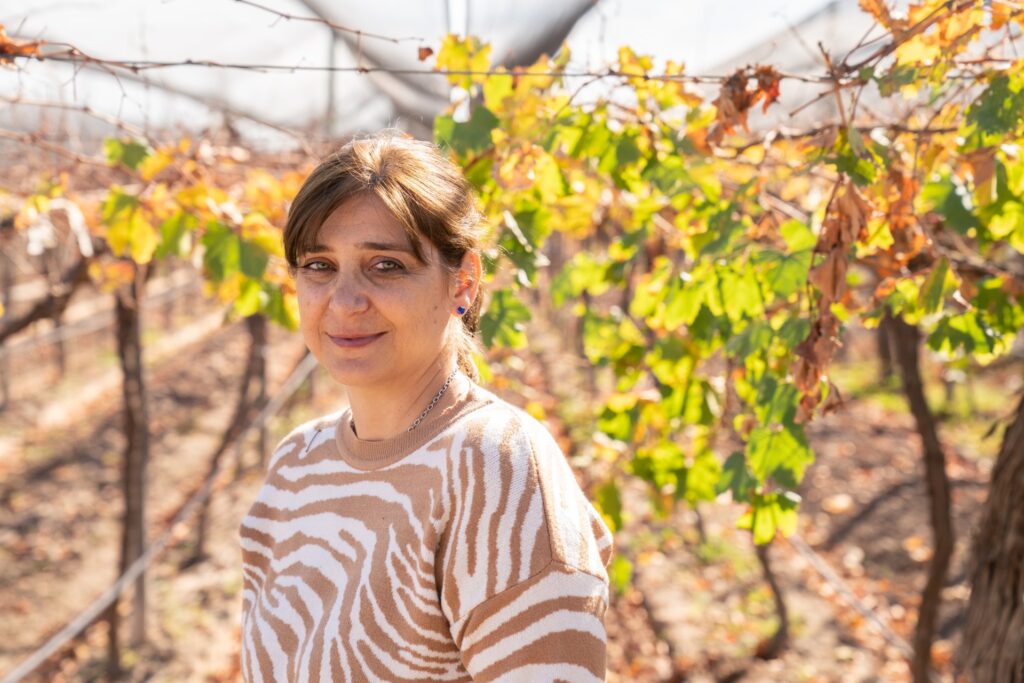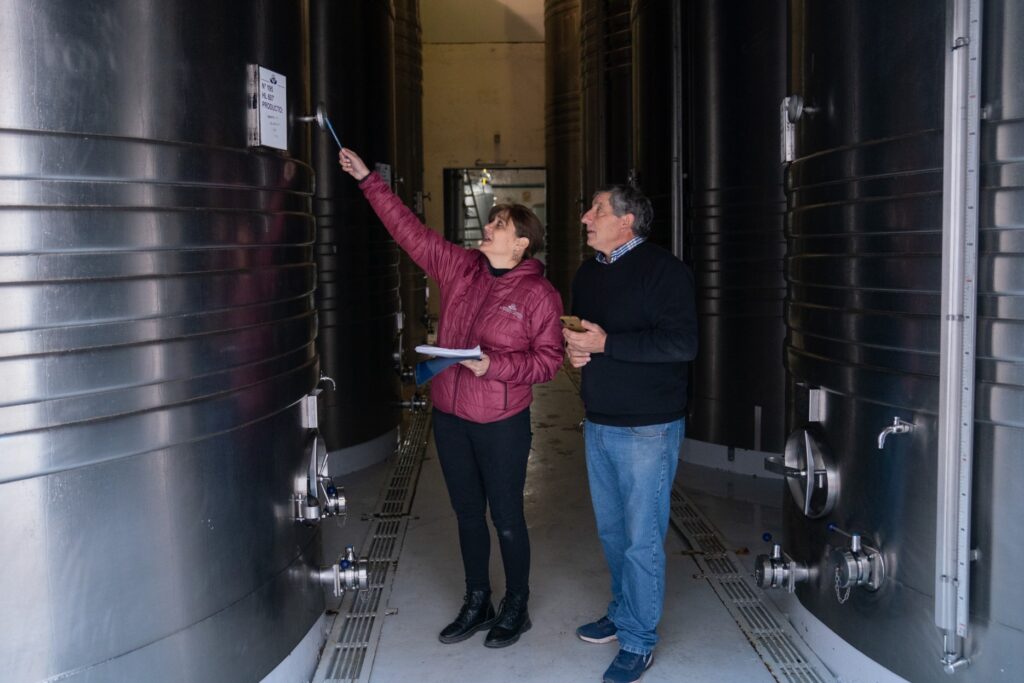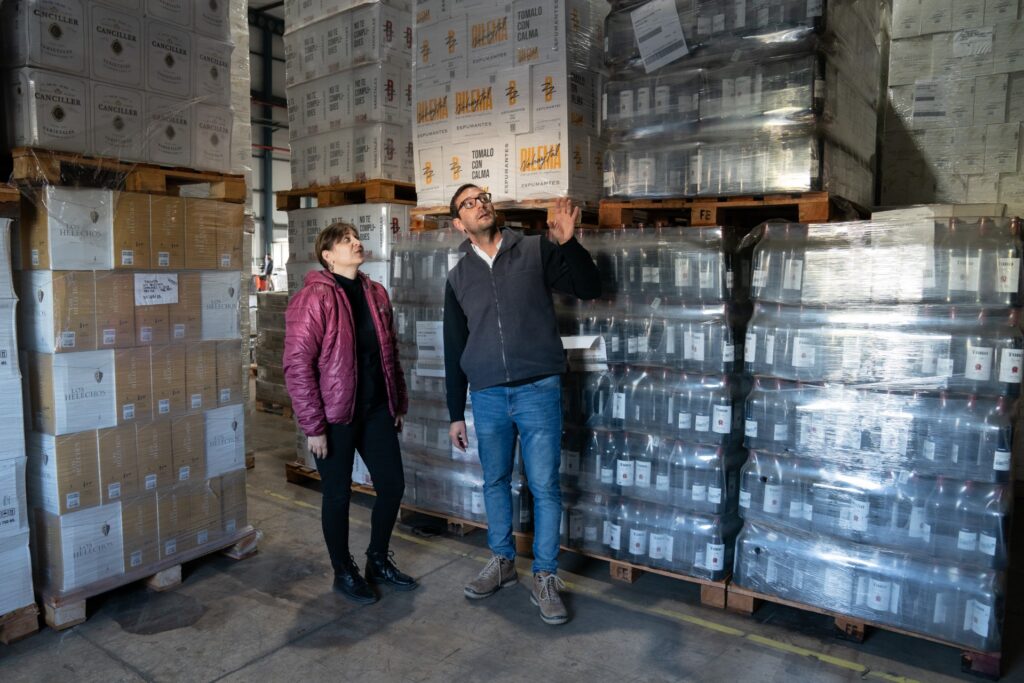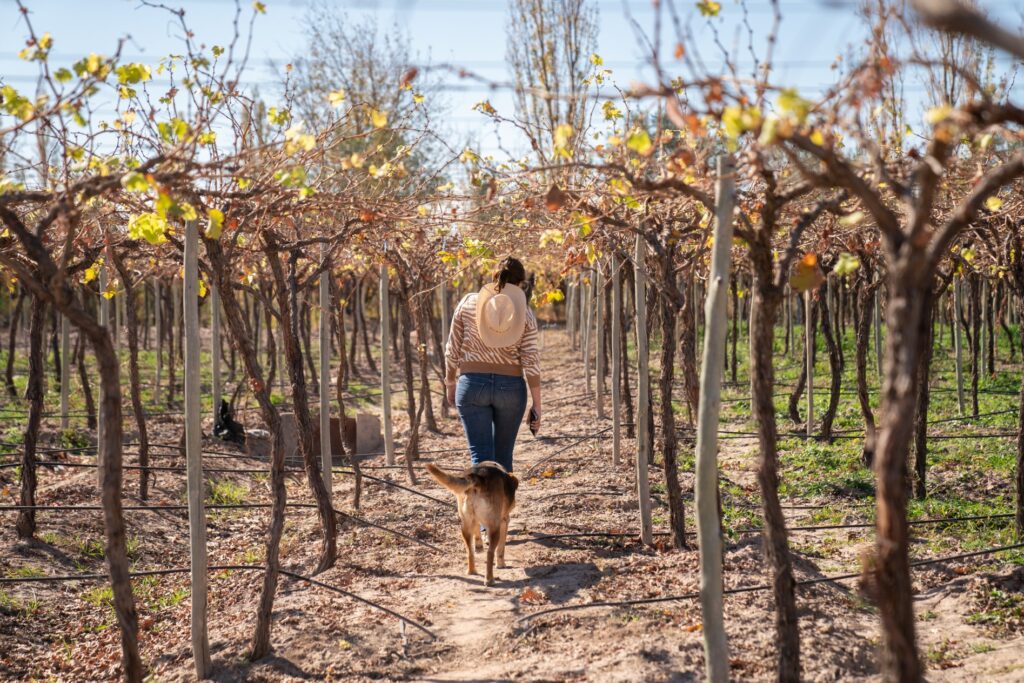When Elizabeth Panella’s father passed away in 2015, she and her brothers inherited the family vineyards in Argentina. Panella, who had an established career as an accountant, found herself immersed in grapes and wine.
The siblings were just getting their feet under them as newly minted vintners in Mendoza, the largest wine-producing region in South America, known for its Malbec, when the pandemic hit — in the middle of the harvest season. People around the world were embracing remote work and video calls to avoid spreading the virus, and Panella likewise turned to technology to help reduce physical contact in tallying buckets of grapes picked.
Before long, she’d adopted a slew of new AI-powered tools that now are helping revolutionize and democratize agriculture in Argentina and beyond by giving small farmers access to agronomists, data scientists and algorithms that help them sow, water, fertilize and harvest more efficiently to save money and become more sustainable and competitive. Other countries around the globe are taking note of the “agtech” revolution as governments try to boost food production to feed growing populations, even amid a shrinking supply of water and farmland and increasing challenges from geopolitical and economic unrest.
“There’s a sense of rootedness, and we don’t want tomorrow to be lost,” Panella says. “We have continued with the tradition of my great-grandparents, grandparents and my father, and now we are handling the wine production as best as we can to deliver the farm to our children in the future” — including by embracing new agricultural demands, such as traceability, which she says is “much easier to carry out with technology.”
About a quarter of the earth’s arable land and forests are in Latin America, according to The Nature Conservancy. And Argentina in particular is an agricultural powerhouse, ranking among the top providers of food worldwide, according to the World Bank, and specializing in wine, beef and soybeans, among other crops. So, the country’s vintners and farmers have vast influence over global food production.
“Agriculture is the essence of life and the mother of all industries,” says Agrobit CEO and founder Horacio Balussi. “To put a seed in the ground and grow food gives people a different vision of the world and their life, so farmers are different people, very special.”
Balussi, who grew up as the son of a carpenter in a community of corn farmers in Argentina, created Agrobit, a tech company that began with agricultural software 40 years ago and in 2019 used AI and machine learning for the country’s first intelligent agriculture system.
Agrobit worked with Microsoft to build a customizable, Azure-based platform and then to accelerate its certification and entry into the marketplace to get it to farmers and vintners faster. Microsoft already had experience in the industry through its Project FarmBeats and Project FarmVibes programs, which use data from sensors, drones, satellites, connected tractors and other equipment on the farm to feed AI-powered tools and algorithms that turn data into intelligence. Microsoft recently announced Microsoft Azure Data Manager of Agriculture, a commercial solution that is built on the foundation of Project FarmBeats.
Agrobit’s first AI-enabled platform focused on soybeans, corn and wheat, and has expanded from there to help manage 50 different crops, including lemons, tomatoes and avocados, all grown on about 7 million acres of its clients’ farms. The system constantly improves, helping growers produce greater output while reducing the input — such as seed, water and fertilizer — by putting precise amounts in precise places to create a more sustainable model for food production, Balussi says. Agrobit clients are seeing overall cost savings of as much as 30% when they implement the systems’ recommendations, says José Avalis, an Agrobit technologist.
Avalis embodies the new type of food producer Agrobit is trying to reach, as it levels the playing field in agriculture. The son of farmers, Avalis says he is “the first technology guy in the family,” but he is carrying on his parents’ legacy on the side by farming 3,000 acres with his brother in his spare time.
Technology is helping farmers and agricultural producers of all sizes, from family farms to large cooperatives, at every point along the food chain, from the back end — budgets, invoices and traceability documentation — to the fields themselves, Avalis says.
With Agrobit’s platform, farmers can run different scenarios for dry or humid years and add in changing government regulations, market valuations and currency exchange rates, combined with all the specific growing and harvesting requirements for each different type of crop, and quickly come up with full plans and budgets to help with decision-making, Avalis says. The system can even suggest a different type of crop that might work better for a certain season based on all those parameters. And the apps work on connected computers in the office as well as on offline devices out in the field.
“Farmers like technology, but they are very conservative, and they need real proof to adopt it,” Balussi says.
That describes Juan Martin Millet, 43, who’s a fourth-generation farmer near Rosario, a large city in the humid, flat, mostly agricultural interior of Argentina called the Humid Pampas. It’s a fertile region roughly the size of the U.S. state of Iowa, where Millet raises breeding cows and grows wheat, corn, soybeans and sorghum on an 8,600-acre farm.
“I’m always trying to adapt and innovate,” Millet says — but even the smallest changes can prove to be expensive mistakes.
So when Millet adopted the ACA Mi Campo platform four years ago, he started small. ACA, an agricultural cooperative of 50,000 small farmers, is helping its members leverage technology to grow better-quality crops more efficiently.
First Millet varied the seed density as he planted, based on ACA Mi Campo’s row-by-row geoinformation analysis of his fields, and compared the results throughout the season with fields where he used traditional sowing methods. The system helped so much — with savings of about 10% a year as he used less seed and less fertilizer while getting the same yields as before — that he quickly moved on to follow ACA Mi Campo’s recommendations for applying fertilizer more precisely and says he’s “excited to do more” tech-assisted farming.
The proof from Millet’s trials with the app convinced the longtime farmer to stop farming “by habit” and to “do things more conscientiously, taking into account what each specific environment requires,” he says. And despite Millet’s experience over two decades, he says the platform’s working diary has been particularly helpful for reminders and tips on tasks that only come around once a year.
“Access to technology has been democratized,” helping to make farming more efficient and environmentally sustainable, says Cristian Ottaviani, a regional farm adviser for ACA Mi Campo. “Four, five, six years ago it was extremely expensive both in time and money to get access to these tools, and the implementation was very slow because of the cost. Now, you can map the whole lot in a matter of minutes.”
Using sensors, satellites and algorithms, under the tutelage of agronomists, data scientists and software developers, systems such as Agrobit’s monitor the air and soil conditions and predictions for a field and send farmers alerts when it’s a prime time for planting, watering, fertilizing, weeding and harvesting a specific crop. With each satellite pass, the system monitors the plants’ growth and suggests actions. And the machine learning element helps the system continuously learn best practices for each region and improve each season to help farmers boost quality, efficiency and cost savings. That helps producers keep track remotely, giving them the capacity to farm larger areas and freeing them up for other pursuits — such as Panella’s accounting work and Avalis’ programming.
Such freedom is particularly attractive to younger farmers, who are more comfortable with technology and tend to have careers and hobbies that keep them from roaming the fields as much as their parents may have, Balussi and others say.
That generational shift is one of the biggest challenges farmers face in Latin America — and in agriculture worldwide, Balussi says. “Producers are aging, and we don’t have young people coming into the industry to replace them,” he says. “But young people like technology, and it’s enticing and empowering them to get into agriculture and be successful.”
Panella, 42, was introduced to the new tech by Fecovita, a federation of 5,000 small vintners in 29 cooperatives, that helps promote and sell the wine they produce, together controlling 22% of Argentina’s wine market.
The group offers access to 26 agronomists and 60 winemaking experts that work in their own laboratory, a mechanized grape harvesting service, an aerial spraying service with drones — and a tech support team that includes Juan Garro, an agricultural engineer and agronomist who has been Fecovita’s technical coordinator for 10 years.
“Although many digital tools have appeared, we work with small producers who have had a hard time incorporating them because they don’t have access to smart devices or Wi-Fi,” Garro says. “But during the pandemic, even 70-year-old producers who had never touched a digital tool started connecting through video call platforms” — and are now adopting technology in their vineyards, thanks to a simplified app that lets them take action with just a push of a button.
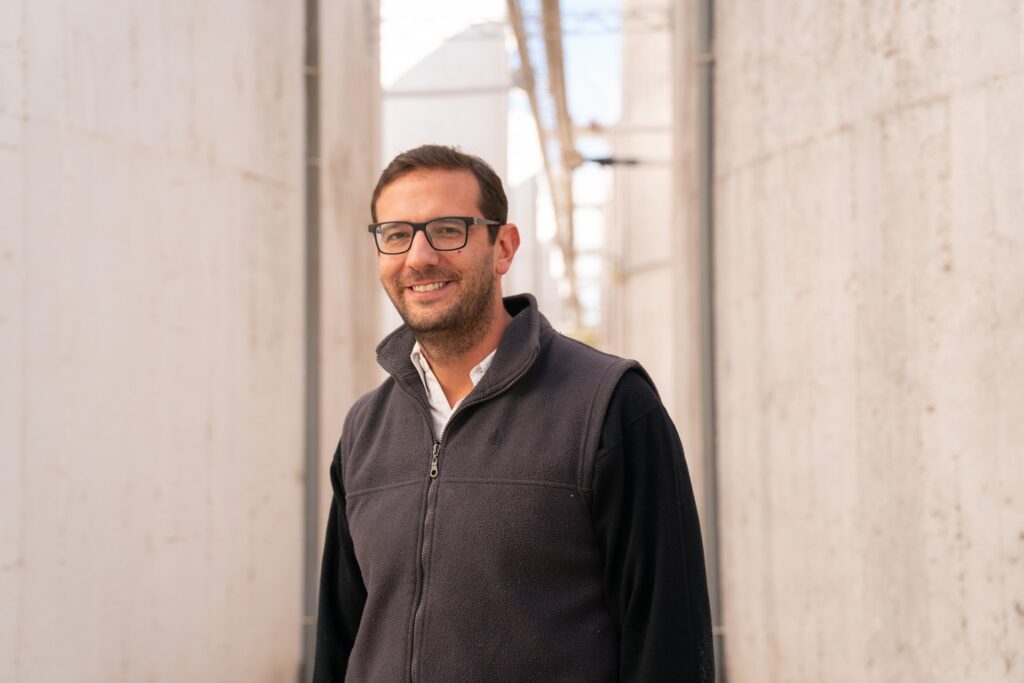
Vintners now can make speedier decisions, since they can reach experts for advice “practically 24 hours a day” without having to wait for technicians or agronomists to drive to their vineyards to diagnose issues, Garro says. And Fecovita’s digital platform makes it easier to upload documentation required by interested buyers, in a world where traceability provides a competitive advantage as consumers become more interested in sustainability and environmentally friendly practices. Some digital records are accessible to the cooperative’s team, too, to help them ensure the quality of the group’s wines.
“Now we can see everything that was ever done to the Malbec grape that entered Pool No. X and ended up in Bottle No. X,” Garro says. “And if we have some kind of problem, we can go back to identify exactly what happened along the way.”
As Panella began working with Fecovita’s tech team, she saw an increase in productivity with a decrease in the costs and time required, helping her better compete against larger winemakers in a region that the Mendoza government estimates has more than 1,200 wineries. The system relays satellite images to Fecovita’s agronomists, who help her monitor her vineyards and consult with her virtually through the app to ward off potential issues and keep her vines healthy and weed-free. The app alerts her to the possibility of frost, so she can plan in advance to protect the grapes.
Perhaps most importantly, given the decade-long drought in Mendoza, devices in Panella’s wells now let her start pumping water to her vines with a simple click in the app no matter where she might be, reducing water use through more precise stops and starts. Combined with insights from a nutritional analysis on the vines by Fecovita agronomists, some producers have been able to cut their water use by 10%, Garro says.
“We can see all the inputs and the quantities of everything we use to analyze if we are being optimal with the use of our resources and if we are going the right direction or not,” Panella says. “It’s a combination of humans and technology with this system that is guiding us to more efficiency and helping us be more competitive.”
Top image: Elizabeth Panella, who had an established career as an accountant, recently inherited a family vineyard in Argentina’s famed Mendoza Valley. (Photo by Fernando de la Orden)


